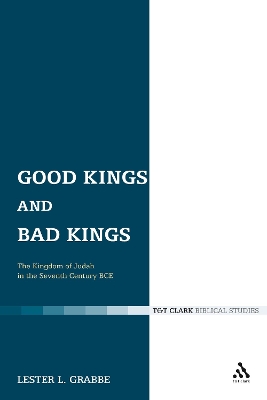The Library of Hebrew Bible/Old Testament Studies
2 total works
v. 393
According to the Bible, among the last kings of the kingdom of Judah was one of the most notorious kings-Manasseh-and one of the most righteous-Josiah. Are the accounts of their contrasting reigns anything more than the ideological creations of pious writers and editors? Does this juxtaposition of a 'good king' and a 'bad king' provide good historical information or only theological wishful thinking? This carefully compiled volume assesses the history of Judah in the seventh century BCE covering history and archaeology from Sennacherib to Nebuchadnezzar.Several examine the reign of Josiah, questioning the nature of his famous cult reform, and even its historicity. Others present new insights into the portrayal of Manasseh and address the question of whether his reign is ripe for re-evaluation. With contributions from internationally known scholars such as Rainer Albertz, Philip Davies, Ernst Axel Knauf, this incisive collection presents an illuminating view of the depictions of kindship in the Hebrew Bible. "A very helpful volume that delivers a candid shot of the debate on the history of seventh century BCE.
Of keen interest not only for commentators on the book of Deuteronomy but also for those working on a literary history of the Pentateuch or a history of a Yahweh religion." - Eckhart Otto, University of Munich, Germany.
Of keen interest not only for commentators on the book of Deuteronomy but also for those working on a literary history of the Pentateuch or a history of a Yahweh religion." - Eckhart Otto, University of Munich, Germany.
The European Seminar in Historical Methodology is committed to debating issues surrounding the history of ancient Israel and Judah with the aim of developing methodological principles for writing a history of the period. In this particular session the topic chosen was the Omride dynasty - its rise and fall - and the subsequent Jehu dynasty, down to the fall of Samaria to the Assyrians. Participants discuss such topics as the dating of prophetic texts, the house of Ahab in Chronicles, the Tel Dan inscription, the Mesha inscription, the Jezebel tradition, the archaeology of Iron IIB, the relationship between the biblical text and contemporary sources, and the nature of the Omride state. The volume incidentally gives a reasonably comprehensive treatment of the main sources, issues, debates, and secondary literature on this period of Israel's history. An introductory chapter summarizes the individual papers and also the relevant section of Mario Liverani's recent history of the period. A concluding 'Reflections on the Debate' summarizes the issues raised in the papers and provides a perspective on the discussion.

